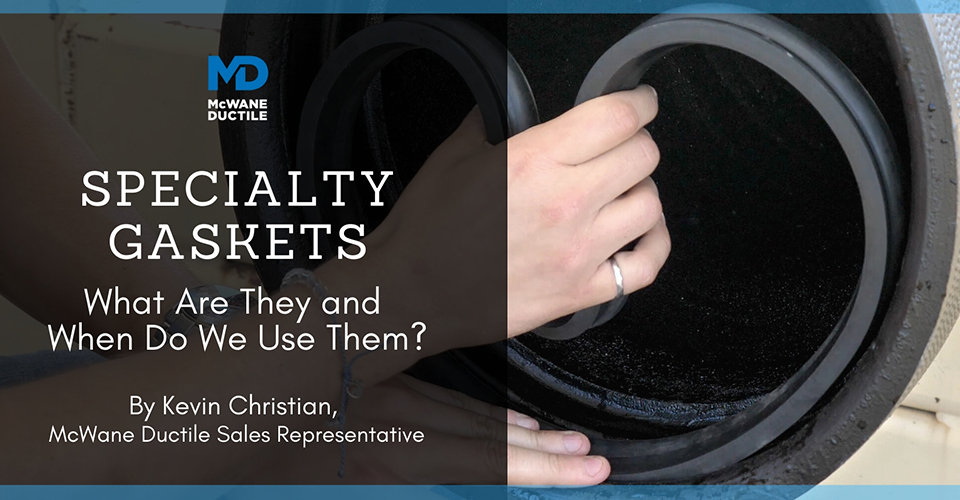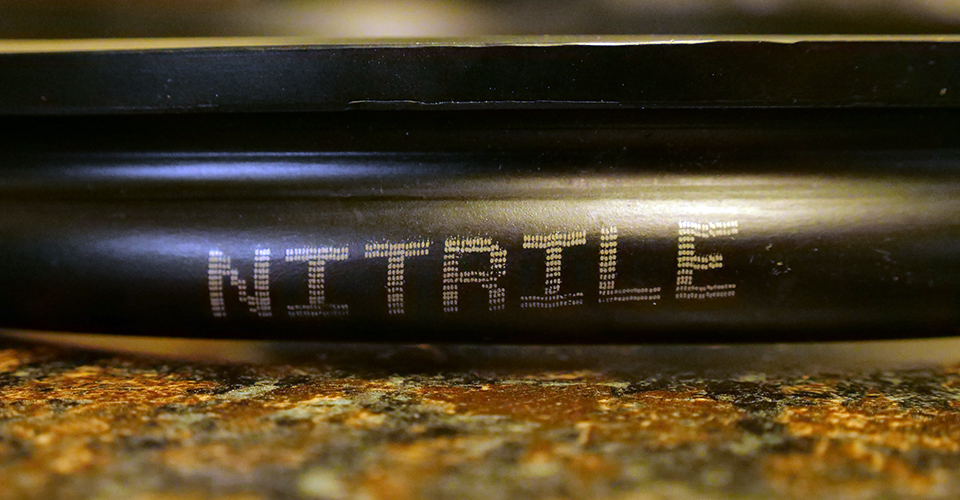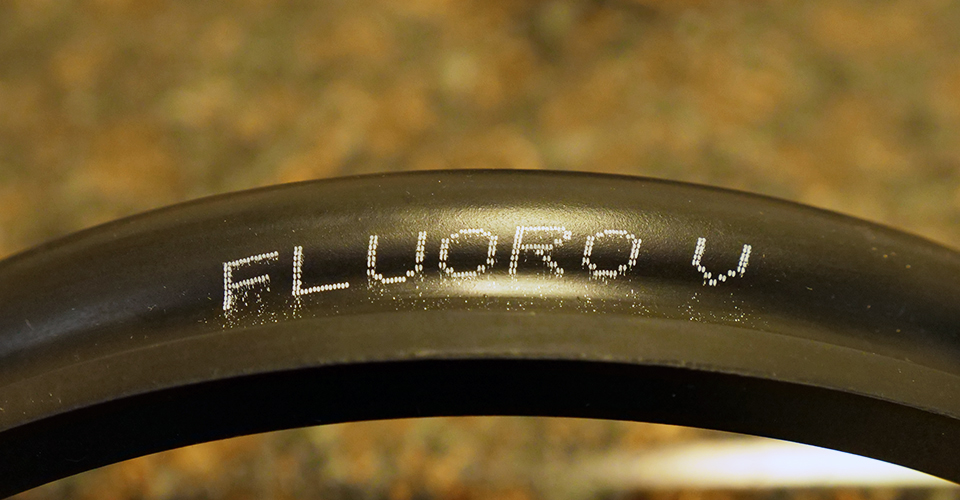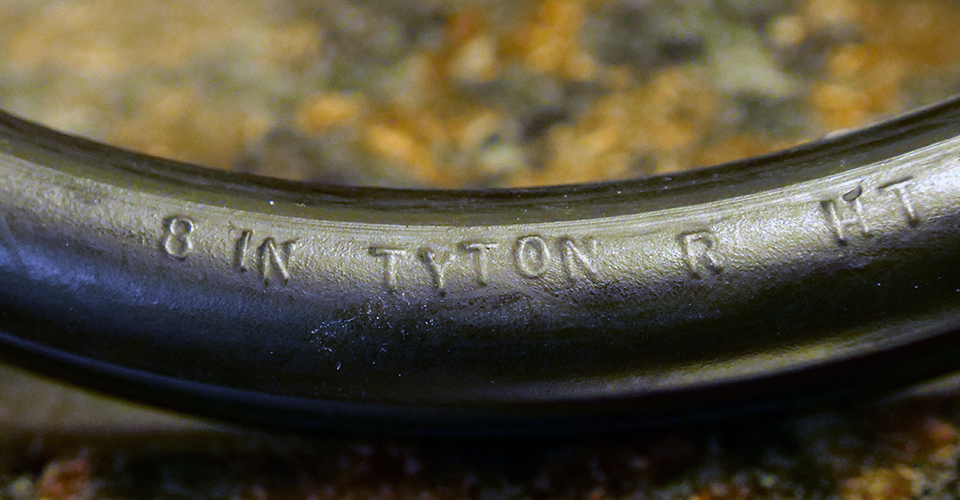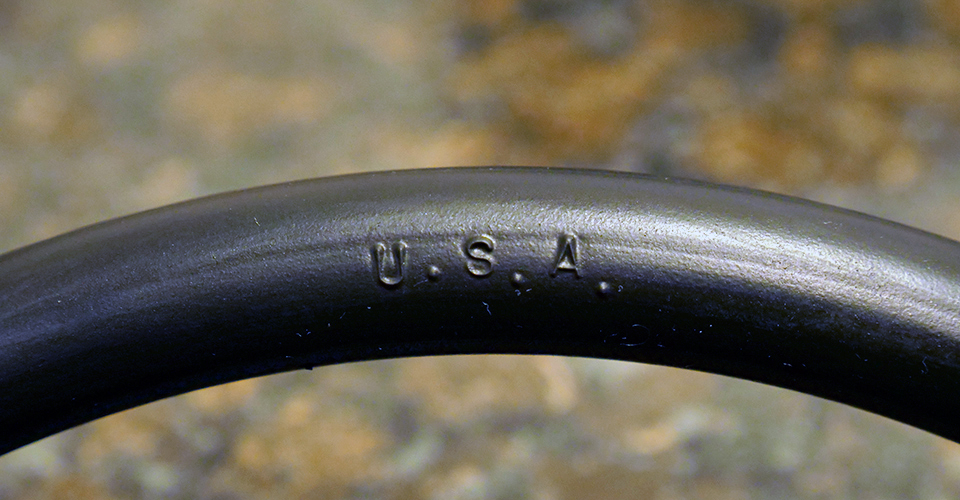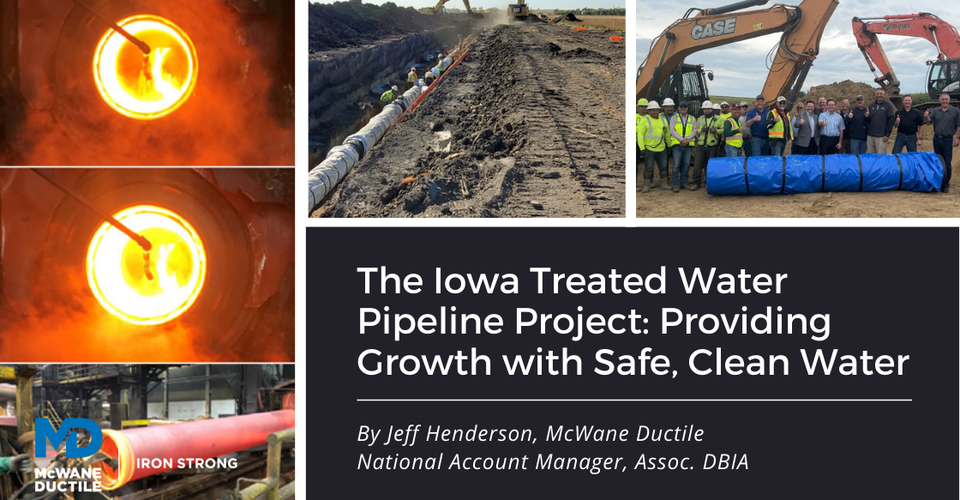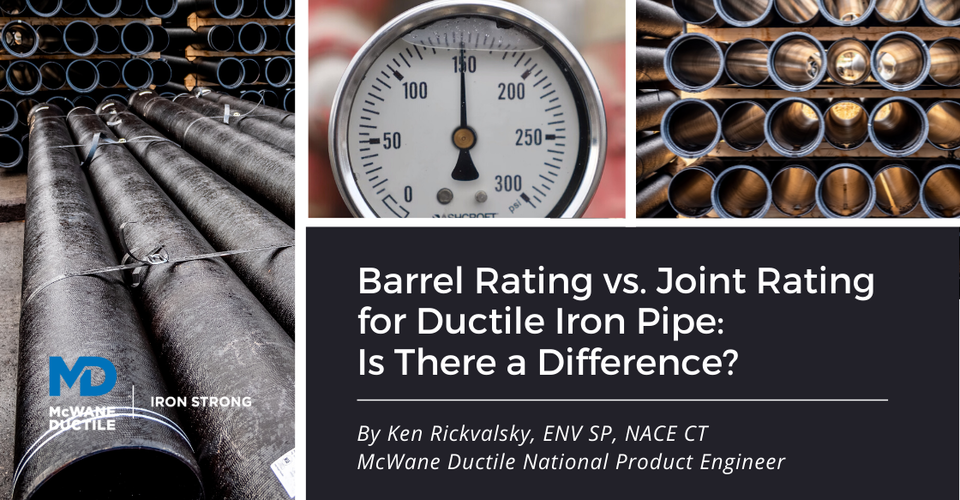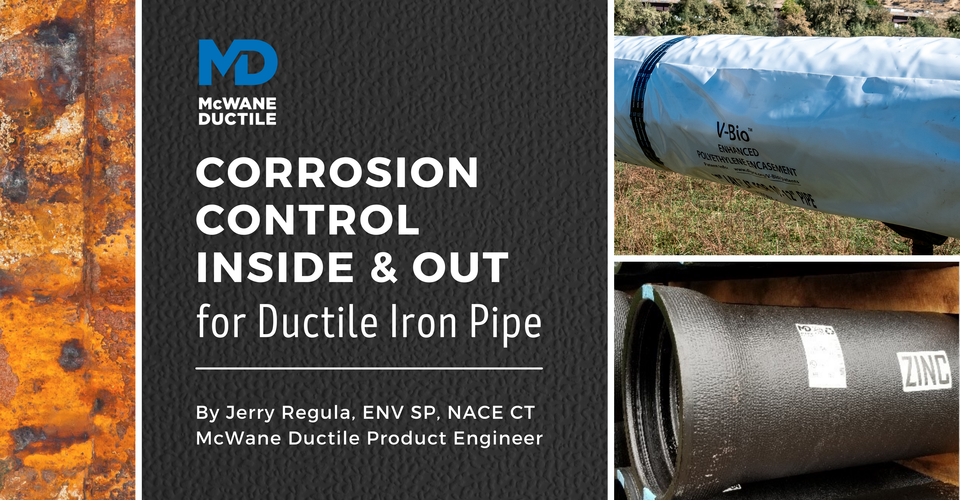For over 500 years, iron pipe joints have been connected in a variety of ways. From the first flanged joints developed in 1785 that used gaskets made with various materials to the evolution of the bell and spigot joint around 1950 that used caulking yarn or braided hemp.
Today’s modern push-on gaskets are comprised of different types of rubber compounds, and the development of the push-on gasket has proven to be instrumental to the success of the leak-free water and sewer joint. Let's take a closer look at each specialty gasket available on the market today.
Special Jobs Call for Special Gaskets
Did you know that not all push-on gaskets are intended for all applications? In order to maximize the effectiveness in any application, it's essential to use the proper gasket material for your specialty application.
Soil conditions, other types of pipelines near your installation location, and fluid temperature are primary factors when determining which specialty gasket is right for the job. Specialty gaskets are made of various types of elastomers to resist whatever a job may require.
How Do You Select the Right Specialty Gasket for the Job?
First, be sure to use specialty gaskets provided by the pipe manufacturer. Additionally, be sure gaskets are NSF61 and NSF372 approved. Now, let’s take a closer look at the various specialty gaskets available, their differences, and their uses.
Click the play button in the image below to view an informative video on specialty gaskets.
SBR (Styrene Butadiene)
Styrene Butadiene (SBR) gaskets are the most commonly used push-on joint gasket in the Ductile iron pipe (DI pipe) industry. Every piece of DI pipe is shipped standard with an SBR gasket. SBR is the closest to natural rubber of all the specialty gaskets.
Common uses for the SBR gasket are:
- Drinking-Water
- Sea Water
- Sanitary Sewer
- Reclaimed Water
- Raw Water
- Storm Water
The maximum service temperature for SBR push joint gaskets is 150 degrees Fahrenheit for water and sewer applications.
EPDM (Ethylene Propylene Diene Monomer)
EPDM gaskets are commonly used with Ductile Iron pipe when there are the presences of:
- Alcohols
- Dilute Acids
- Dilute Alkalis
- Ketones (MEK, Acetone)
- Vegetable Oils
Other acceptable services included are:
- Drinking-Water
- Sea Water
- Sanitary Sewer
- Reclaimed Water
- Raw Water
- Storm Water
EPDM push joint gaskets have one of the highest service temperatures of the five major specialty gaskets at 212 degrees Fahrenheit for water and sewer applications.
Nitrile (NBR) (Acrylonitrile Butadiene)
Nitrile gaskets are commonly used with Ductile iron pipe when there are the presences of:
- Hydrocarbons
- Fats
- Oils
- Fluids
- Refined Petroleum
Other acceptable services include:
- Drinking Water
- Sea Water
- Sanitary Sewer
- Reclaimed Water
- Raw Water
- Storm Water
Nitrile push joint gaskets for a maximum service temperature of 150 degrees Fahrenheit for water and sewer applications.
Neoprene (CR) (Polychloroprene)
Neoprene gaskets are commonly used with Ductile iron pipe when dealing with greasy waste. Their use includes:
- Drinking Water
- Sea Water
- Sanitary Sewer
- Reclaimed Water
- Raw Water
- Storm Water
Viton, Fluorel (FKM) (Fluorocarbon)
These are considered the “Mack Daddy” of specialty gaskets -- Viton gaskets can be used for:
- Aromatic Hydrocarbons
- Fuels Acids
- Vegetable Oils
- Petroleum Products
- Chlorinated Hydrocarbons
- Most Chemicals and Solvents
Other acceptable services include:
- Drinking Water
- Sea Water
- Sanitary Sewer
- Reclaimed Water
- Raw Water
- Storm Water
Additionally, Viton push-on joint gaskets have the highest maximum service temperature of 212 degrees Fahrenheit, making the Viton gasket the best overall and all-around specialty gasket for Ductile iron pipe. But being the best comes with a cost; this is the most expensive specialty gasket on the market.
How Do You Identify Each Specialty Gasket?
Sometimes it can be challenging to differentiate specialty gaskets at first glance, so you want to be sure to look closely.
Push-on joint gaskets all have the size, type, and country of origin molded into the side of the gasket in small letters. From this, you should be able to find what type and size of the gasket you are installing.
Caring for Your Specialty Gaskets
Now, once your gaskets have been delivered to the job site, be sure to take proper care of your investment. Several factors can harm the overall performance of your gaskets.
Such negative factors include, but are not limited to:
- Direct sunlight
- Temperature
- Weather
- Dirt
- Debris
When it comes to identifying, caring for, and installing your gaskets, be sure to check out these Iron Strong blogs by my colleagues:
- Jason Barnes, How to Avoid a Displaced or Rolled Gasket (Gasket Installation)
- Josh Baker, Proper Gasket Storage and Care
- Jeremy Gwin, Three Common Questions about Ductile Iron Pipe Gaskets
The expected lifecycle of DI pipe is more than 100 years, and now that you’re able to identify the correct specialty gasket for any job site situation, you can be confident that your project is Iron Strong in the long run.
All three Ductile iron pipe manufacturers have the capability of fulfilling your specialty gasket needs, regardless of the type of joint supplied. For more information, please refer to the Ductile Iron Pipe Research Association’s (DIPRA’s) website or contact your local McWane Ductile Salesperson.
Need Assistance with Your Waterworks Project?
McWane Ductile offers multiple services to our customers, extending far beyond manufacturing DI pipe. From estimating to design, from production to installation, we take great pride in providing education and assistance to water professionals throughout the water industry.
Be sure to check out all our digital offerings:
- More articles and videos from our Iron Strong Blog
- The McWane Pocket Engineer
- Engage with us on LinkedIn
- Follow us on Facebook
- Follow us on Twitter
McWane Ductile, Building Iron Strong Utilities for Generations.
And special thanks to Specification Rubber Products, Inc. for providing the gaskets we demonstrated in this vlog.

